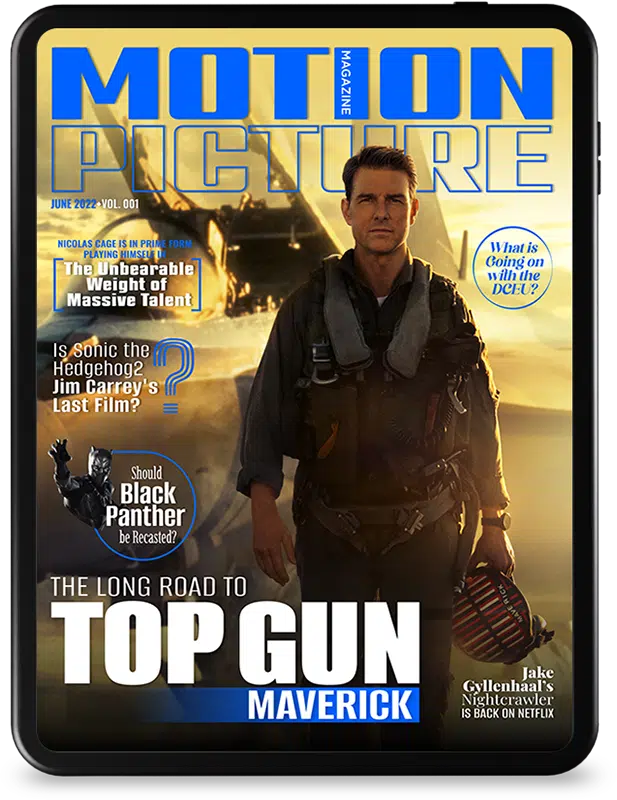Unveiling the Legacy of Miyamoto Musashi: The Life of Japan’s Greatest Swordsman
Birth and Early Years: The Making of a Legend
Imagine Japan, bristling with the elegance and brutality of an era where the sword’s sway was law. That’s where the tale of Miyamoto Musashi slices through history. Born around 1584, Musashi’s life unfolded when samurai ethos stitched the nation’s very fabric. His infancy, shrouded in obscurity, wasn’t just some prelude; it was like the anticipatory hush before a battle’s clash. From the get-go, the kid was marked for a life that’d be nothing but ordinary.
The Path of the Samurai: Miyamoto Musashi’s Formative Experiences
Early on, Musashi’s path was paved with relentless challenges. Through trials that might’ve floored the bravest of hearts, Musashi honed his spirit alongside his blade. His samurai’s journey wasn’t your run-of-the-mill tale of mastering the art; it was a raw pursuit of perfection through the grittiest of means.
Dueling Fame: Key Battles and Turning Points
Fast-track to Musashi at 13, and you’ve got a prodigy claiming victory in a duel against a samurai. This wasn’t just luck—it was a sneak peek at the legend he’d become. You talk about turning points; Musashi’s life was a collection of ’em. Each duel notched on his belt, from the renowned battle with Sasaki Kojiro, served to solidify him as the maestro of swordsmen.
The Book of Five Rings: Decoding Musashi’s Philosophy
Amidst shattering swords, Musashi also etched his thoughts in ink. ‘The Book of Five Rings’ wasn’t just a manual on war tactics; it displayed Musashi’s ideals clearer than a polished katana. He translated the verve of the battlefield into palpable philosophies, making his words hit just as fiercely as his strikes.
Musashi’s Influence on Modern Martial Arts and Pop Culture
Musashi’s shadow looms large over modern martial arts. His stances and strikes became cornerstone teachings. In the realm of pop culture, this swordsman strides tall—inspiring anime, movies, and even the philosophy behind some Elizabeth Debicki‘s acting, infectious to anyone caught in their narratives.
Untangling the Myth and Reality of Miyamoto Musashi
Historical Records vs. Folklore: Separating Fact from Fiction
Sift through Japan’s history, and you hit the strata densely packed with Musashi myths. But let’s be real, separating the man from the legend is like trying to pluck a single note from a symphony. The historical Musashi was a flesh-and-blood enigma, with each stroke of his sword writing a line between folklore and fact.
Analysis of Musashi’s Fighting Techniques through Existing Scrolls and Texts
Scrutinizing Musashi’s scrolls, one might unveil the skeleton of his techniques. His moves weren’t just for show; they were strategic masterstrokes backed by a mind as sharp as the blades he wielded. The way he described his Niten Ichi-ryū, it’s almost like the choreography to the most lethal dance ever performed.
Musashi’s Rivalries: Examining Feuds with a Critical Lens
Musashi’s life was punctuated with rivalries that could have sprung from the scriptwriter’s pen of the hit series reviewed on Silver Screen Magazine, riveting hot Teachers of feud narratives. The bouts with men like the aforementioned Kojiro swelled from personal vendettas to tales echoing through the ages. But let’s not get it twisted—Musashi’s duels were as cerebral as they were visceral.
The Legend in Art and Literature: How Musashi Has Been Portrayed
Splashed across screens and pages, Musashi has been depicted with an air of allure as mystical as Inbar Lavi‘s charm. Art and literature have adored his legacy, sometimes embellishing and other times stripping down to the gritty core. Each portrayal, a blend of reverence and creative liberty.
Musashi’s Book of Five Rings The Definitive Interpretation of Miyamoto Musashi’s Classic Book of Strategy

$11.85
Musashi’s Book of Five Rings: The Definitive Interpretation of Miyamoto Musashi’s Classic Book of Strategy captures the timeless wisdom of Japan’s greatest swordsman and philosopher, Miyamoto Musashi. This comprehensive guide delves deeply into the myriad interpretations of the original work, providing martial artists, strategists, and business professionals with unparalleled insights into Musashi’s profound teachings. The book breaks down complex concepts of strategy, timing, and psychology, making them accessible to readers of all levels. With its scholarly analysis and practical applications, it serves both as an educational tool and a source of inspiration.
In this definitive interpretation, Musashi’s original text is fully examined and thoughtfully explained in modern context, with expert commentary by historians, martial arts masters, and strategic consultants. The work meticulously preserves the integrity of Musashi’s writings while offering contemporary examples that demonstrate the relevance of his strategies in today’s world. Each of the five “rings” or sections, representing elements–Earth, Water, Fire, Wind, and Void–is thoroughly explored to present a holistic understanding of the ancient manuscript. The reader is provided with actionable advice that can be applied to personal development, leadership, and conflict resolution.
Whether you are a martial artist seeking to refine your practice, a business person looking to sharpen your strategic acumen, or simply a lover of historical texts, Musashi’s Book of Five Rings: The Definitive Interpretation is an indispensable resource. It not only preserves the spirit of the original work but also enhances the reader’s appreciation for its enduring applications. The book features high-quality paper and printing to complement its scholarly work, complete with illustrations and diagrams that aid in understanding. By the time the reader turns the final page, they will have gained a profound understanding of Musashi’s philosophy and how it continues to influence strategy and thinking in countless fields.
| Category | Information |
|---|---|
| Full Name | Miyamoto Musashi (宮本 武蔵) |
| Birth-Death | c. 1584 – June 13, 1645 |
| Profession | Swordsman, Warrior, Rōnin, Artist, Writer |
| Notable Achievements | Undefeated in 60 duels from age 12 to 27; Renowned artist; Author of “The Book of Five Rings” (五輪書, Go Rin no Sho) |
| Martial Arts Philosophy | Known for two-sword style (Niten Ichi-ryū); Emphasized strategy, tactics, and philosophy applicable to various life aspects |
| Typical Weapon | Katana and Wakizashi (two swords); Also proficient with other weapons |
| Martial Arts School Founded | Hyōhō Niten Ichi-ryū (兵法二天一流) |
| Famous Duel | With Sasaki Kojirō, which Mushashi won using a bokken (wooden sword) carved from an oar |
| Key Rival | Musō Gonnosuke, founder of the Shintō Musō-ryū or Jojutsu, who according to his school claimed to have defeated Musashi |
| Influence | Considered the epitome of the samurai code in Japan; has been the inspiration for numerous books, films, and cultural works |
| Written Works | “The Book of Five Rings” and “The Way of Walking Alone” (or “Dokkōdō”) |
| Artistic Contributions | Produced calligraphy and classic ink paintings; Noted for his “Shrike on a Dead Branch” |
| Cultural Legacy | Musashi is a legendary figure in Japan, holding a mythic status akin to celebrated sports heroes in Western culture |
| Portrayal in Media | Featured in various novels, manga, films, and video games; for example, Eiji Yoshikawa’s novel “Musashi” |
| Philosophy Relevance | Musashi’s principles often studied beyond martial arts, including in business strategy and philosophical discourse |
| Historical Records | Limited historical accounts of his duels; Considerations suggest some embellishment in stories and legends about his life |
The Draw of the Sword: Miyamoto Musashi’s Techniques Explored
The Niten Ichi-ryū: A Closer Look at Musashi’s Dual-Wielding Mastery
Picture this: two swords, one samurai—a lethal ballet showcasing the exquisite Niten Ichi-ryū style. This wasn’t just wielding double the steel; it was double the philosophy, double the prowess. The technique was Musashi’s brainchild, birthed with every duel, every victory.
The Five Rings: Understanding the Strategies and Principles
Dive deep into ‘The Book of Five Rings,’ and you’re not just swimming in tactical wisdom; you’re soaking in Musashi’s most coveted secrets. It dissected combat with a surgeon’s precision—each ring a layer that, when peeled back, revealed the samurai soul.
The Concept of Katsujin-ken: Musashi’s Approach to the ‘Life-Giving Sword’
Musashi wasn’t all about the deathly slice; he believed in the Katsujin-ken—the ‘life-giving sword.’ This ethos wasn’t about scoring a swift win; it was the understanding that real victory lies in improving oneself, not just defeating an opponent. It was about brandishing a blade that carved out life, not ending it.
Miyamoto Musashi’s Impact on Japanese Culture and Beyond
Musashi in Japanese Education: How He Is Taught Today
Today, in classrooms across Japan, Musashi stands as a towering figure representing the pinnacle of Bushido—the samurai code. They’re not just teaching kids how to hold a sword; they’re passing down Musashi’s legacy as a standard almost as celebrated as the euphoria you’d get stepping into worlds like Candytopia.
The Global Footprint of Musashi’s Legacy
Musashi’s fame doesn’t waft only in Japan’s winds; it’s a gale felt worldwide. His essence has leapt borders, infusing itself in diverse cultures, and with the internet as its sails, it travels forcefully as ever.
The Immortalized Warrior: Statues, Monuments, and Commemorative Acts
From the silent reverence of statues to the jubilant buzz of festivals in his honor, Japan lauds Musashi not merely as a swordsman but as an ethos. Every monument erected and every act commemorated to him is a testament to an immortal legacy that resonates like the strike of a gong.
The Timelessness of a Swordsman: Why Miyamoto Musashi’s Legend Endures
Beyond Swordsmanship: Musashi’s Philosophies in Contemporary Context
It’s not just the bladeplay that keeps Musashi’s name alive—it’s the endurance of his philosophies in the dojo of daily life. Entrepreneurs, artists, even starlets like Atticus Shaffer‘s characters, apply his theories, proving the versatility of his wisdom. Musashi wasn’t just painting with swords; he was scribing timeless strategies for success.
The Appeal of Musashi’s Story in Modern Times: Interviews with Historians and Martial Artists
Ask any historian or martial artist, and you’ll get a mosaic of reasons why Musashi stays relevant. Each narrative spring from his life, branch out, and root themselves in the present age—a testament to the timelessness of his saga.
The Ongoing Influence of Musashi in the Mentorship of Martial Arts
In the hallowed halls where martial arts are not only taught but lived, Musashi’s influence materializes like a specter guiding every kata, every spar. His principles still mentor warriors-in-training, echoing through every movement and mindset honed in today’s dojos.
The Way of the Warrior Deluxe Silkbound Editions in Boxed Set (Arcturus Collector’s Classics, )

$31.99
Embrace the essence of bushido with “The Way of the Warrior Deluxe Silkbound Editions” presented in a magnificent boxed set, part of the Arcturus Collector’s Classics series. This exquisite collection features time-honored texts that delve into the soul of the samurai, exploring the intricate philosophy and discipline of the ancient Japanese warriors. Each volume is handsomely bound in silk with intricate designs, embodying the elegance and strength found within the warrior’s code. The set includes revered works such as “Hagakure” by Yamamoto Tsunetomo and “The Book of Five Rings” by Miyamoto Musashi, offering wisdom that transcends the age of the samurai, speaking to the modern reader about leadership, strategy, and personal development.
Housed in a sturdy, beautifully crafted box, this collection is designed to protect and showcase these literary treasures. The box itself is a work of art, featuring a traditional Japanese aesthetic with a sophisticated touch that demands to be displayed in any collector’s library. The attention to detail in the production of this set ensures that every aspect, from the silk bookmark ribbons to the gilded page edges, contributes to an immersive cultural experience. Whether as a gift for a devoted bibliophile or as a centerpiece for your own collection, this boxed set is sure to inspire and enchant anyone who values the profound legacy of the samurai spirit.
“Arcturus Collector’s Classics” has outdone itself with the presentation and curation of “The Way of the Warrior Deluxe Silkbound Editions.” The set not only serves as a connection to historical martial traditions but also as a guide for contemporary readers seeking to incorporate the virtues of courage, honor, and integrity into their lives. The eloquent translations preserve the authentic voice and teachings of the original authors, making these texts accessible to a modern audience. Indulge in this timeless collection that conjures a bygone era and invites you to reflect on the principles that have shaped warriors and leaders for centuries.
Reflections Upon the Steel and Spirit of a Warrior
Perspectives on How Musashi’s Life Lessons Extend Beyond the Battlefield
Musashi’s teachings cut deeper than flesh; they slice through the marrow of existence itself. The insights he conjured while in the midst of blood and steel prove just as incisive in peacetime, emphasizing an adaptability that goes beyond warrior codes.
The Future of Musashi’s Legacy: Preserved Tradition or Evolving Mythos?
Even centuries down the line, the question remains: will Musashi’s legacy crystallize into a set of untouchable commandments, or will it continue to morph with the times, a canny shapeshifter always staying a step ahead? His influence is neither static nor predictable, much like the man himself.
Wrap-Up: Where Blades and Wisdom Meet: Forging Ahead With Musashi’s Enduring Legacy
The Multifaceted Persona of Musashi as an Ideal and an Inspiration
Miyamoto Musashi—the man, the myth, the legend—is the archetype of the samurai, an idol of prowess in combat and sagacity. His existence taps into a universal quest for excellence, a drive to overcome the odds, be it in battle or life’s many facades.
The Journey Continues: New Interpretations and Inspirations Drawn from Musashi’s Life and Work
As the banners of the past keep fluttering, Musashi’s legacy finds new bearers with every passing year. Whether it’s through a fresh cinematic lens or an original take on his teachings, the seeds sown by his life continue to sprout inspiring variations on the theme of the ultimate samurai.
From the first clanging of steel to the quiet reflection of his writings, Miyamoto Musashi encapsulates the essence of a warrior’s spirit enduring through ages. As pages turn and screens flicker to life, his tale becomes not just a chronicle of a bygone era but a living, breathing guide. Whether etched in ink, cast in bronze, or extolled through tales, Musashi’s legend isn’t just preserved in history—it is sharpened by it, poised to strike into the heart of the future.
Miyamoto Musashi: Unsheathing Hidden Truths
Musashi’s Book of Five Rings (Deluxe Hardcover Book)

$8.99
Immerse yourself in the timeless wisdom of the legendary samurai with the deluxe hardcover edition of Musashiâs ‘Book of Five Rings’. Crafted with care, this edition boasts a lavish cover embossed with traditional Japanese patterns, gold foil lettering, and a built-in silk bookmark to ensure you keep your place within the ancient text. Translated with precision, the book retains the spirit and authenticity of Miyamoto Musashi’s original work, offering martial artists, strategists, and business leaders invaluable lessons in discipline, strategy, and philosophy.
Step into Musashi’s world as you turn the thick, high-quality pages that are a tactile pleasure to the fingertips, a nod to the heritage of this 17th-century masterpiece. With its generous margins and clear, readable typeface, this edition is designed for both contemplation and practical study. The text is complemented by traditional Japanese artwork, including ink wash illustrations and calligraphy, which capture the essence of the samurai era and provide a contemplative backdrop to Musashi’s profound insights.
‘Musashi’s Book of Five Rings’ is not merely a book but a timeless artifact for those who appreciate the merging of historical wisdom with exquisite craftsmanship. As you display this work on your bookshelf or desk, it invites conversation and admiration, a statement piece that is as much a decorative tribute to Japanese culture as it is a manual for victory in life’s many battles. Whether read for its strategic acumen or appreciated for its physical beauty, this deluxe hardcover book offers enduring inspiration and a sense of connection to the legendary Musashi himself.
The Dual-Wielding Dynamo
Well folks, buckle up because the life of Miyamoto Musashi was as sharp and twisted as the swords he wielded! Legend has it that Musashi, the ultimate samurai bad boy, fought more than 60 duels and came out unscathed. Quite the track record, huh? But get this – the guy was a self-taught swordsman, turning him into a rockstar in martial arts history. Talk about DIY spirit! Musashi’s signature style? Double trouble, with a sword in each hand. And trust me, crossing blades with him was as ill-advised as bringing a knife to a gunfight.
A Brush With Greatness
But wait, there’s more! Musashi wasn’t just a one-trick pony. Nope, when he wasn’t dancing the deadly tango on the battlefield, he was busy dipping his brush into the ink. That’s right, his artistry wasn’t confined to warfare. Musashi’s paintings and calligraphy( are just as striking as his swordsmanship. Bet you didn’t see that coming! And let’s not forget ‘The Book of Five Rings,’ a masterpiece where he sliced through the philosophy of combat and strategy. Talk about leaving a mark on history!
No Ordinary Joe
Let’s circle back to those epic duels for a sec. Did you know that at the tender age of 13, our intrepid hero claimed his first victory? Teenage rebellion, Musashi style! But it wasn’t all smooth sailing. The stuff of legend is his duel against Sasaki Kojirō, where Musashi fashioned a wooden sword( from an oar while en route to the showdown. He didn’t just think outside the box; he shattered it! Swinging that oar-turned-sword, Musashi pulled off a victory that would’ve made the other guy’s head spin—if it hadn’t been, well, slightly detached.
The Lone Wolf Wanders
Musashi was sort of a Ronin with a capital R – a samurai without a master. This dude wandered the land, perfecting his craft and, let’s say, encouraging others to pursue alternative career paths (if you catch my drift). His later years were spent as the ultimate wanderer, seeking enlightenment and sharing nuggets of wisdom like a philosopher in samurai armor.
Now isn’t that a slice of history with a side of intrigue? Musashi’s tale remains a cutting edge saga that continues to captivate and inspire. A true swordsman legend indeed!
The Complete Musashi The Book of Five Rings and Other Works The Definitive Translations of the Complete Writings of Miyamoto Musashi Japan’s Greatest Samurai

$9.99
“The Complete Musashi: The Book of Five Rings and Other Works” is the most authoritative collection of Miyamoto Musashiâs writings, meticulously translated to capture the essence of the original texts. Musashi, Japan’s most legendary samurai, was not only a master swordsman but also a philosopher and strategist, whose influence extends far beyond martial arts into various aspects of leadership and strategy. The collection includes “The Book of Five Rings,” Musashi’s most famous work that remains a cornerstone of martial arts philosophy and instruction. This compendium ensures readers have access to the full spectrum of Musashi’s legacy, including lesser-known texts and letters that complete the portrait of this iconic figure.
Comprehensive in scope, this definitive edition provides context and commentary to enhance the readerâs understanding of Musashiâs complex teachings and historical significance. The translations aim to be faithful to the original seventeenth-century Japanese manuscripts, while also being accessible to a modern audience. Each section is carefully annotated, detailing the nuances of feudal era Japanese culture and the intricacies of the samurai code. This makes “The Complete Musashi” an indispensable resource for historians, martial artists, and anyone interested in the fundamental principles of military strategy and philosophy.
Not just a martial arts manual, “The Complete Musashi” explores the broader philosophy that underpinned Musashiâs approach to life and combat. It delves into his concepts of timing, strategy, and perception, which apply to many aspects of daily living and decision-making. The book is as much an inspiration for personal development as it is a tactical guide, offering wisdom that readers can implement in their own lives. With its blend of historical narrative, philosophical insight, and practical advice, “The Complete Musashi” is a treasure trove for those seeking to understand the mind of Japan’s greatest samurai.
Who defeated Musashi?
Well, that’s the million-dollar question, isn’t it? Technically, no one defeated Miyamoto Musashi in combat. Musashi, a legendary samurai known for his unbeaten track record, fought over 60 duels without facing defeat. Talk about a winning streak!
Why was Miyamoto Musashi so strong?
As for why Miyamoto Musashi was so strong, let me tell ya, it wasn’t just his lucky charm! This fella was not only a master swordsman but also a strategist and philosopher. His strength came from relentless training, shrewd techniques, and a Zen-like state of mind that kept him cool as a cucumber in battle.
Who is the greatest samurai of all time?
Hands down, many folks peg Miyamoto Musashi as the greatest samurai of all time. His combo of brains, brawn, and the blade has kept his legend alive for centuries. He’s like the Michael Jordan of samurai, without the basketball and the sneakers!
How many duels did Miyamoto Musashi lose?
In all his sword-swinging days, Miyamoto Musashi didn’t lose a single duel. Zilch! Zero! With his remarkable record, he’s like the undefeated champion of the samurai world.
How did Miyamoto Musashi died?
Musashi’s final showdown was with none other than natural causes. He died of thoracic cancer, according to texts. Yep, even the mightiest samurai isn’t immune to the grip of nature.
How did Miyamoto Musashi lose?
How did Miyamoto Musashi lose? Well, that’s a trick question, isn’t it? He actually never lost a duel! But don’t get it twisted—every match wasn’t a walk in the park, but still, Musashi always managed to come out on top.
How tall was Musashi?
Tale has it, Musashi stood about 5 feet 6 inches tall, which was pretty average for his time. But don’t let his height fool you—on the battlefield, this guy was larger than life!
What did Miyamoto Musashi say?
Miyamoto Musashi said a lot of wise things, but here’s a nugget for you: “Do not regret what you have done.” That’s some solid advice, right there, coming from a man who clearly had his life together.
What martial art did Miyamoto Musashi do?
When it comes to martial arts, Miyamoto Musashi was all about the way of the sword, kenjutsu. But he wasn’t just a one-trick pony—nope, he also dabbled in close quarters combat, so we’re talking about a true all-rounder here.
Who was the deadliest samurai?
Debating who the deadliest samurai was could start a bar fight, but one name often whispered with a mix of fear and respect is Miyamoto Musashi. With an unbeaten streak in duels and a reputation that’s lasted for ages, he’s a top contender for sure.
How many duels did Miyamoto Musashi win?
Okay, fact-checkers, get ready. Miyamoto Musashi is said to have won around 60 duels. Phew, just thinking about all that swordplay makes me tired!
What do you call a female samurai?
A female samurai, you ask? They were known as “onna-bugeisha.” These ladies were no damsels in distress; they could swing a naginata with the best of ’em!
Who was Musashi’s toughest opponent?
Musashi’s toughest opponent is a subject of debate, but many say it was Sasaki Kojiro, who he famously defeated in 1612. The duel is legendary, almost mythic in status, with Musashi’s strategic savvy and his late arrival—talk about psyching out your opponent!
Who trained Miyamoto Musashi?
Who trained Miyamoto Musashi, you wonder? Well, according to lore, he trained under the guidance of his uncle, Dorinbo, in the art of swordsmanship. But let’s be real, a lot of Musashi’s skills seem to be self-taught—he was kinda like the ultimate DIY warrior.
Where is Miyamoto Musashi’s sword?
In search of Miyamoto Musashi’s sword? Well, aren’t we all? The honest answer is that its current location isn’t known. His famed blades could be tucked away in some collector’s vault or even lying undiscovered—it’s one of history’s tantalizing mysteries!




























